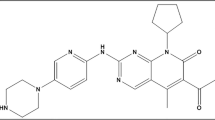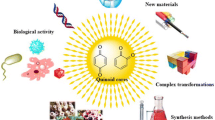Abstract
Benzophenanthridine alkaloids represent a very interesting and significant group of natural products that exhibit a broad range of biological and pharmacological properties. Among this group of alkaloids, sanguinarine, nitidine, fagaronine, and chelerythrine have the potential to form molecular complexes with DNA structures and have attracted recent attention for their possible clinical and pharmacological utility. This review focuses on the interaction of these alkaloids with polymorphic DNA structures (B-form, Z-form, HL-form, and triple helical form) reported by several research groups employing various physical techniques such as spectrophotometry, spectrofluorimetry, circular dichroism, NMR spectroscopy, thermal melting, viscometry as well as thermodynamic analysis by isothermal titration calorimetry and differential scanning calorimetry to elucidate the mode and mechanism of action at the molecular level to determine the structure-activity relationship. DNA binding properties of these alkaloids are interpreted in relation to their biological activity.








Similar content being viewed by others
References
Adhami VM, Aziz MH, Reagan-Shaw SR, Nihal M, Mukhtar H, Ahmad N (2004) Sanguinarine causes cell cycle blockade and apoptosis of human prostate carcinoma cells via modulation of cyclin kinase inhibitor-cyclin-cyclin-dependent kinase machinery. Mol Cancer Ther 3:933–940
Adhikari A, Hossain M, Maiti M, Kumar GS (2008) Energetics of the binding of phototoxic and cytotoxic plant alkaloid sanguinarine to DNA: isothernmal titration calorimetric studies. J Mol Struct 899:54–63
Ahmad N, Gupta S, Husain MM, Heiskanen KM, Mukhtar H (2000) Differential antiproliferative and apoptotic response of sanguinarine for cancer cells versus normal cells. Clin Cancer Res 6:1524–1528
Babich H, Zukerbraun HL, Barber IB, Babich SB, Borenfreund E (1996) Cytotoxicity of sanguinarine chloride to cultured human cells from oral tissue. Pharmacol Toxicol 78:397–403
Bai LP, Zhao ZZ, Cai Z, Jiang ZH (2006) DNA binding affinities and sequence selectivity of quaternary benzophenanthrine alkaloids sanguinarine, chelerythrine, and nitidine. Bioorg Med Chem 14:5439–5445
Bajaj NP, McLean MJ, Waring MJ, Smekal E (1990) Sequence-selective, pH-dependent binding to DNA of benzophenanthridine alkaloids. J Mol Recog 3:48–54
Barret Y, Samvaire Y (2006) Fagaronine a novel antileukemic alklaoid. Phytother Res 6:59–63
Benoist H, Comoe L, Joly P, Carpenter Y, Desplaces A, Dufer J (1989) Comparative effects of fagaronine, adriamycin and aclacinomycin on K562 cell sensitivity to natural-killer-mediated lysis. Lack of agreement between alteration of transferrin receptor and CD15 antigen expressions and induction of resistance to natural killer. Cancer Immunol Immunother 30:289–294
Cabrespine A, Bay JO, Barthomeuf C, Curé H, Chollet P, Debiton E (2005) In vitro assessment of cytotoxic agent combinations for hormone-refractory prostate cancer treatment. Anticancer Drug 16:417–422
Chang YC, Chang FR, Khalil AT, Hsiesh PW, Wu YC (2003) Cytotoxic benzophenanthridine and benzylisoquinoline alkaloids from Argemone mexicana. Z Naturforsch 58:521–526
Chen FM (1984) Base protonation facilitates B-Z interconversions of poly(dG-dC).poly(dG-dC). Biochemistry 23:6159–6165
Chen WH, Qin Y, Cai Z, Chan CL, Luo GA, Jiang ZH (2005) Spectrometric studies of cytotoxic protoberberine alkaloids binding to double-stranded DNA. Bioorg Med Chem 13:1859–1866
Das S (2000) Biophysical studies on the interactions of benzophenanthridine alkaloids with polymorphic nucleic acid structures. PhD Thesis, Jadavpur University, Kolkata
Das M, Khanna SK (1997) Clinicoepidemiological, toxicological, and safety evaluation studies on argemone oil. Crit Rev Toxicol 27:273–297
Das S, Kumar GS, Maiti M (1999) Conversions of the left-handed and protonated form of DNA back to the bound right-handed form by sanguinarine and ethidium: a comparative study. Biophys Chem 76:199–218
Das S, Kumar GS, Ray A, Maiti M (2003) Spectroscopic and thermodynamic studies on the binding of sanguinarine and berberine to triple and double helical DNA and RNA structures. J Biomol Struct Dyn 20:703–714
Denny WA (1989) DNA-intercalating ligands as anti-cancer drugs: prospects for future design. Anticancer Drug Des 4:241–263
Faddejeva MD, Belyaeva TN, Rosanov Yu M, Sedova M, Sokolovskaya EL (1984) Studies on the complex formation with DNA and the effect on DNA hydrolysis, RNA syhthesis and cellular membrane ATPase system of some antitumor alkaloids. Stud Biophys 104:267–269
Gallagher K, Sharp K (1998) Electrostatic contributions to heat capacity changes of DNA-ligand binding. Biophys J 75:769–776
Giuliana G, Pizzo G, Milici ME, Musotto GC, Giangreco R (1997) In vitro antifungal properties of mouthrinses containing antimicrobial agents. J Periodontol 68:729–733
Hélène C (1991) The anti-gene strategy: control of gene expression by triplex-forming-oligonucleotides. Anticancer Drug Des 6:569–584
Holden JA, Wall ME, Wani MC, Manikumar G (1999) Human DNA topoisomerase I: quantitative analysis of the effects of camptothecin analogs and the benzophenanthridine alkaloids nitidine and 6-ethoxydihydronitidine on DNA topoisomerase I-induced DNA strand breakage. Arch Biochem Biophys 370:66–76
Holy J, Lamont G, Perkins E (2006) Disruption of nucleocytoplasmic trafficking of cyclin D1 and topoisomerase II by sanguinarine. BMC Cell Biol 7:13–26
Hossain M (2009) Biophysical studies on the interaction of intercalating and groove binding molecules with deoxyribonucleic acids. PhD Thesis, Jadavpur University, Kolkata
Hossain M, Kumar GS (2009) DNA binding of benzophenanthridine compounds sanguinarine versus ethidium: comparative binding and thermodynamic profile of intercalation. J Chem Thermodyn 41:764–774
Hurley LH (2002) DNA and its associated processes as targets for cancer therapy. Nat Rev Cancer 2:188–200
Hussain AR, Al-Jomah NA, Siraj AK, Manogaran P, Al-Hussein K, Abubaker J, Platanias LC, Al-Kuraya KS, Uddin S (2007) Sanguinarine-dependent induction of apoptosis in primary effusion lymphoma cells. Cancer Res 67:3888–3897
Ianoul A, Fleuny F, Dural O, Waigh R, Jardiller JC, Alix AJP, Nabier I (1999) DNA binding by fagaronine and ethoxidine, inhibitors of human DNA topoisomerases I and II, probes by SERS and flow linear dichroism spectroscopy. J Phys Chem B 103:2008–2013
Janin YL, Croisy A, Riou JF, Bisagni E (1993) Synthesis and evaluation of new 6-amino-substituted benzo[c]phenanthridine derivatives. J Med Chem 36:3686–3692
Jones RP, Harkrader RJ, Southard GL (1986) The effect of pH on sanguinarine iminium ion form. J Nat Prod 49:1109–1111
Jovin TM, Soumpasis DM, McIntosh LP (1987) The transition between B-DNA and Z-DNA. Annu Rev Phys Chem 38:521–558
Kaminskyy VO, Lin KW, Filyak Y, Stoika RS (2008) Differential effect of sanguinarine, chelerythrine and chelidonine on DNA damage and cell viability in primary mouse spleen cells and mouse leukemic cells. Cell Biol Int 32:1271–277
Kassim OO, Loyevsky M, Elliott B, Geall A, Amonoo H, Gordeuk VR (2005) Effects of root extracts of Fagara zanthoxyloides on the in vitro growth and stage distribution of Plasmodium falciparum. Antimicrob Agents Chemother 49:264–268
Kumar GS, Maiti M (1994) DNA polymorphism under the influence of low pH and low temperature. J Biomol Struct Dyn 12:183–201
Latimer LJP, Payton N, Forsyth G, Lee JS (1995) The binding of analogues of coralyne and related heterocyclics to DNA triplexes. Biochem Cell Biol 73:11–18
Maiti M (2001) Molecular aspects on the interaction of sanguinarine with B-form, Z-form and HL-form structures. Indian J Biochem Biohys 38:20–26
Maiti M, Kumar GS (2007a) Molecular aspects on the interaction of protoberberine, benzophenanthridine, and aristolochia group of alkaloids with nucleic acid structures and biological perspectives. Med Res Rev 27:649–695
Maiti M, Kumar GS (2007b) Protoberberine alkaloids: physicochemical and nucleic acid binding properties. Top Heterocycl Chem 10:155–209
Maiti M, Nandi R (1987) Circular dichroism of sanguinarine-DNA complexes: effect of base composition, pH and ionic strength. J Biomol Struct Dyn 5:159–175
Maiti M, Nandi R, Chaudhuri K (1982) Sanguinarine: a monofunctional intercalating alkaloid. FEBS Lett 142:280–284
Maiti M, Nandi R, Chaudhuri K (1983) The effect of pH on the absorption and fluorescence of sanguinarine. Photochem Photobiol 38:245–249
Maiti M, Nandi R, Chaudhuri K (1984) Interaction of sanguinarine with natural and synthetic deoxyribonucleic acids. Indian J Biochem Biophys 21:158–165
Maiti M, Das S, Sen A, Kumar GS, Nandi R (2002) Influence of DNA structures on the conversion of sanguinarine alkanolamine form to iminium form. J Biomol Struct Dyn 20:455–464
Malikova J, Zdarilova A, Hlobikova A (2006) Effect of sanguinarine and chelerythrine on cell cycle and apoptosis. Biomed Pap Med Fac Univ Palacky Olomouc Czech Repub 150:5–12
Moterich IG, Strekal ND, Nowicky JW, Maskerich SA (2007) Absorption, fluorescence and SERS spectra of sanguinarine at different pH values. J Appl Spectrosc 74:666–672
Nafao Y, Sano S, Miyasaka T, Ochiai M, Fiji K, Fujita E, Ishii H (1985) Evaluation of the affinity of new N atom-containing tumor inhibitors for nucleic acids. Nucleic Acids Sym Ser 16:37–40
Nandi R, Maiti M (1985) Binding of sanguinarine to deoxyribonucleic acids of differing base composition. Biochem Pharmacol 34:321–324
Novak RM, Keyer KA, Kinghorn AD, Pezzuto JM (1991) Antiviral activity of the plant compound fagaronine chloride, a reverse transcriptase inhibitor in HIV-infected peripheral blood mononuclear cells and T cell lines. Int Conf AIDS 7:11–12
Pezzuto JM, Antosiak SK, Messmer WM, Slaytor MB, Honig GR (1983) Interaction of the antileukemic alkaloid, 2-hydroxy-3,8,9-trimethoxy-5-methylbenzo[c]phenanthridine (fagaronine), with nucleic acids. Chem Biol Interact 43:323–329
Pohl FM, Jovin TM (1972) Salt-induced co-operative conformational change of a synthetic DNA: equilibrium and kinetic studies with poly (dG-dC). J Mol Biol 67:375–396
Prado S, Michel S, Tillequin F, Koch M, Pfeiffer B, Pierre A, Leonce S, Colson P, Baldeyrou B, Lansiaux A, Bailly C (2004) Synthesis and cytotoxic activity of benzo[c][1,7] and [1,8]phenanthrolines analogues of nitidine and fagaronine. Bioorg Med Chem 12:3943–3953
Qin Y, Pang J, Chen WH, Cai Z, Jiang ZH (2006) Synthesis, DNA-binding affinities, and binding mode of berberine dimers. Bioorg Med Chem 14:25–32
Ray A, Kumar GS, Das S, Maiti M (1999) Spectroscopic studies on the interaction of aristololactam-β-D glucoside with DNA and RNA double and triple helices: a comparative study. Biochemistry 38:6239–6247
Ren J, Chaires JB (1999) Sequence and structural selectivity of nucleic acid binding ligands. Biochemistry 38:16067–16075
Saenger W (1984) Principles of nucleic acids structure. Springer-Verlag, New York
Saran A, Srivastava S, Coutinho E, Maiti M (1995) 1H NMR investigation of the interaction of berberine and sanguinarine with DNA. Indian J Biochem Biophys 32:74–77
Segers-Nolten GM, Sijtsema NM, Otto C (1997) Evidence for Hoogsteen GC base pairs in the proton-induced transition from right-handed to left-handed poly(dG-dC).poly(dG-dC). Biochemistry 36:13241–13247
Sen A, Maiti M (1994) Interaction of sanguinarine iminium and alkanolamine form with calf thymus DNA. Biochem Pharmacol 48:2097–2102
Sen A, Ray A, Maiti M (1996) Thermodynamics of the interactions of sanguinarine with DNA: influence of ionic strength and base composition. Biophys Chem 59:155–170
Serafim TL, Matos JAC, Sardão VA, Pereira GC, Branco AF, Pereira SL, Parke D, Perkins EL, Moreno AJM, Holy J, Oliveira PJ (2008) Sanguinarine cytotoxicity on mouse melanoma K1735–M2 cells—nuclear vs. mitochondrial effects. Biochem Pharmacol 76:1459–1475
Smekal E, Kubova N, Kleinwatcher V (1984) Interaction of benzophenanthridine alkaloid sanguinarine with DNA. Stud Biophys 114:125–132
Southard GL, Boulware RT, Walborn DR, Groznik WJ, Thorne EE, Yankell SL (1987) Sanguinarine, a new antiplaque agent: retention and plaque specificity. J Am Dent Assoc 108:338–341
Stiborova M, Simanek V, Frei E, Hobza P, Ulrichova J (2002) DNA adduct formation from quaternary benzo[c]phenanthridine alkaloids sanguinarine and chelerythrine as revealed by the 32P-postlabeling technique. Chem Biol Interact 140:231–242
Tajmir-Riahi HA, Neault JF, Naoui M (1995) Does DNA acid fixation produce left-handed Z structure? FEBS Lett 370:105–108
Todor IN (2003) The effect of the antineoplastic drug Ukrain on the electrokinetic potential of malignant and normal cells. Int J Immunother 19:159–167
Urbanova J, Lubal P, Slaninova I, Taborska E, Taborsky P (2009) Fluorescence properties of selected benzo[c]phenanthridine alkaloids and studies of their interaction with CT DNA. Anal Bioanal Chem. doi:10.1007/s00216-009-2601-7
Vogt A, Tamewitz A, Skoko J, Sikorski PP, Giuliano KA, Lazo JS (2005) The benzo[c]phenanthridine alkaloid, sanguinarine, is a selective, cell-active inhibitor of mitogen-activated protein kinase phosphatase-1. J Biol Chem 280:19078–19086
Wang LK, Johnson RK, Hecht SM (1993) Inhibition of topoisomerase I function by nitidine and fagaronine. Chem Res Toxicol 6:813–818
Waring MJ (1981) DNA modification and cancer. Annu Rev Biochem 50:159–192
Wolff J, Knipling L (1993) Antimicrotubule properties of benzophenanthridine alkaloids. Biochemistry 32:13334–13339
Acknowledgements
Thanks are due to the Council of Scientific and Industrial Research, Government of India, for the Emeritus Scientist award to M. Maiti. The authors are grateful to all the present and past colleagues at the Biophysical Chemistry Laboratory for their help and cooperation and in particular to those who have contributed over the years to the understanding of sanguinarine binding to nucleic acid structures.
Author information
Authors and Affiliations
Corresponding author
Rights and permissions
About this article
Cite this article
Maiti, M., Kumar, G.S. Biophysical aspects and biological implications of the interaction of benzophenanthridine alkaloids with DNA. Biophys Rev 1, 119–129 (2009). https://doi.org/10.1007/s12551-009-0014-7
Received:
Accepted:
Published:
Issue Date:
DOI: https://doi.org/10.1007/s12551-009-0014-7




